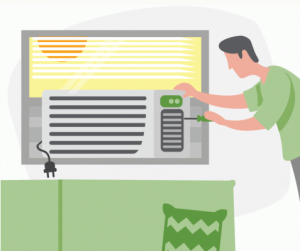As we approach the peak of summer, it is essential for us to address the potential risks associated with extreme heat and its impact on our continuity of operations. Heatwaves and rising temperatures can pose significant challenges to our university’s continuity and the health and well-being of our students, faculty, and staff. In this edition of our Mission Continuity Newsletter, we will highlight the importance of heat awareness and provide practical tips to ensure the safety and resilience of our higher education community during hot weather.
Understanding the Risks
Heatwaves can lead to various health problems, including heat exhaustion and heatstroke. The most vulnerable groups, such as the elderly, young children, and individuals with pre-existing medical conditions, face higher risks. Even healthy individuals can be affected by heat-related illnesses if they are exposed to high temperatures for extended periods without proper precautions. Mitigating heat risks include:
- Staying Hydrated
- Seeking Shade
- Modifying Outdoor Activities
Heat Preparedness and Business Continuity
 Integrate heat preparedness into your department’s Mission Continuity plans to ensure that daily operations can be maintained even during extreme heat conditions. Develop contingency measures to handle potential disruptions caused by heatwaves and take proactive measures that can promote a safe and resilient environment for everyone on campus. One of the most critical aspects for Mission Continuity surrounds power loss. Some things to keep in mind when developing your plan are:
Integrate heat preparedness into your department’s Mission Continuity plans to ensure that daily operations can be maintained even during extreme heat conditions. Develop contingency measures to handle potential disruptions caused by heatwaves and take proactive measures that can promote a safe and resilient environment for everyone on campus. One of the most critical aspects for Mission Continuity surrounds power loss. Some things to keep in mind when developing your plan are:
- Increased Energy Demand
- During heatwaves, the demand for electricity surges as people rely heavily on-air conditioning and cooling systems to maintain comfortable indoor temperatures. The increased demand for electricity can overload power grids and distribution systems. When power grids reach or exceed their capacity, transformers and other electrical components may overheat, leading to equipment failures and blackouts.
- Heat-Related Equipment Failures
- Extreme heat can cause stress on electrical equipment, including transformers, switches, and cables. This stress can lead to malfunctions and failures, further contributing to power disruptions.
- Mitigating Loss during Heatwaves
- Develop and test emergency power plans and equipment failure impacts to ensure critical campus functions, such as medical facilities and research laboratories, can continue operating during a loss or failure.
Resources for Plan Administrators



